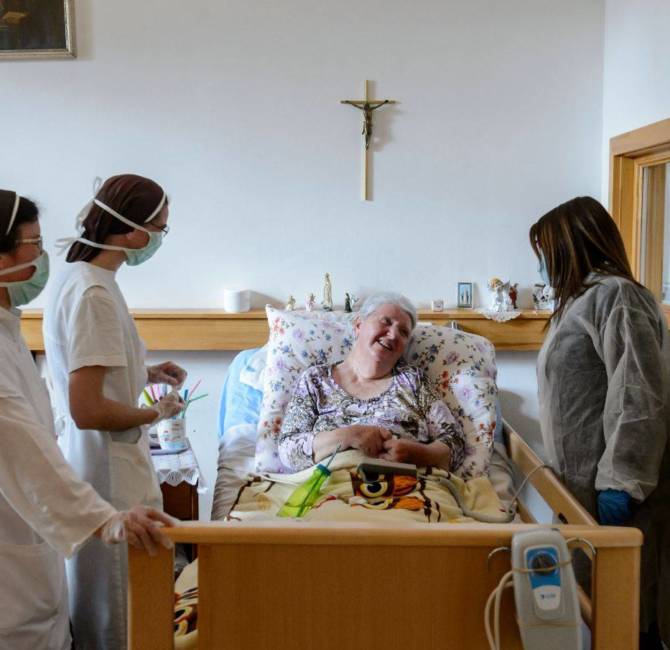Poland – Polish industrial production figures surprised commentators this week, with growth of 11.2% (at constant prices) compared to December 2019. Taking into account seasonal factors (such as the fact that there was one more working day in December 2020 compared to December 2019), industrial growth was 7.1% after 3.5% in November, and after a month of October that saw the highest industrial production in Poland’s history, up 3% compared to the period just before the start of the pandemic.
Admittedly, not all sectors are doing so well. According to data published by the Polish Statistical Office (GUS), output in the construction sector in December was only 3.4 per cent higher than in December 2019, after a year-on-year decline of almost 5 per cent in November. For retail trade, at constant prices, the year-on-year decline was still 0.8% in December compared with a decline of more than 5% in November.
Like its European neighbors, Poland has implemented restrictions since spring 2020 to combat the Covid-19 pandemic. Nevertheless, although the number of cases was much higher in the fourth quarter than in the second quarter, the restrictions were less severe. The GDP figure for 2020 is not yet known, but estimates are hovering around a recession of between -3% and -3.5% against -4.6% foreseen in the 2020 budget after it was amended in the course of the year. Poland is thus estimated to have experienced the weakest recession in the entire EU.
Shopping centers were only closed after Christmas (after having already endured forced closures in the spring and in November), and stores outside shopping malls were able to operate without interruption in 2020. The Morawiecki government has kept schools closed for longer than most other European countries (from October-November depending on age categories, with the youngest primary school pupils attending school again starting from January 18). It also closed fitness clubs, swimming pools and other sports venues at an early stage (with exemptions for many sports activities practiced in clubs), before banning the opening of ski lifts from the end of December, while tourist hotel stays had already been banned. Bars and restaurants have been closed for on-site consumption since the end of October. On the other hand, there has never been in Poland, not even in the spring, any mandatory closure of “non-essential” shops and services, strict home confinement with a need for exemption forms to go out, or even curfews.
In the face of protests and despite a mortality rate linked to the Covid-19 pandemic that is currently similar to or even slightly higher than that observed in France, Italy or Spain, the Polish government seems to be willing to ease restrictions a little and should make announcements to this effect this week. “There will be some easing, but nothing spectacular,” according to sources in the Prime Minister’s Office quoted in the Polish media. Shopping malls, in particular, could be allowed to reopen as of February 1.
Long term consequences
However, the negative impact of restrictions on the economy could be felt for a long time to come. According to the joint Labour Market Monitor (Monitor Rynku Pracy) of the Randstad human resources agency and Pollster polling institute, 14 percent of Poles who have a job are afraid of losing it. That is the highest figure in ten years except for the second quarter of 2020, when it stood at 16 percent. But according to figures published on January 21 by GUS, in December the number of people employed in the corporate sector was only 1% lower than a year earlier, with the average salary up 6.6%, which is the best figure since February 2019, just before the start of the pandemic.
Due to the pandemic, Poland’s currency, the zloty, is now weaker. Its value fluctuated between 4.20 and 4.30 zlotys to the euro before the pandemic, compared to 4.45-4.65 zlotys since March. Exports are benefiting from this and broke an all-time record in November, passing the 100 billion zloty mark for the first time in one month (up almost 10% compared to November 2019). For the whole of 2020, Poland’s trade balance surplus is estimated at around 55 billion zlotys, a sharply rising figure that will have helped to mitigate the recession.
Also, according to GUS data, unemployment in December 2020 was 6.2% compared to 5.2% in December 2019. This is the unemployment rate calculated according to the Polish methodology, and it looks even better when looking at harmonized Eurostat figures. Thus, for November 2020, the GUS points at jobless rate of 6.1% in Poland, while Eurostat puts that rate at 3.3% only compared with an EU average of 7.5%.
Poland, on the other hand, had the highest inflation in the whole EU in 2020, with a 3.4 percent increase in retail prices, mainly due to rising prices in the service sector. In addition to this bad figure, which is nevertheless preferable to the deflation experienced by some countries, there is of course a record increase in public debt: +12% from January to November 2020, with public debt standing at 56.7% of GDP at the end of the third quarter of 2020 (Eurostat figures), compared with more than 97% for the euro zone. During the current crisis, Poland, which is governed by the Law and Justice Party (PiS) often described as “populist”, is thus consolidating its place among the EU’s best performing economies.




